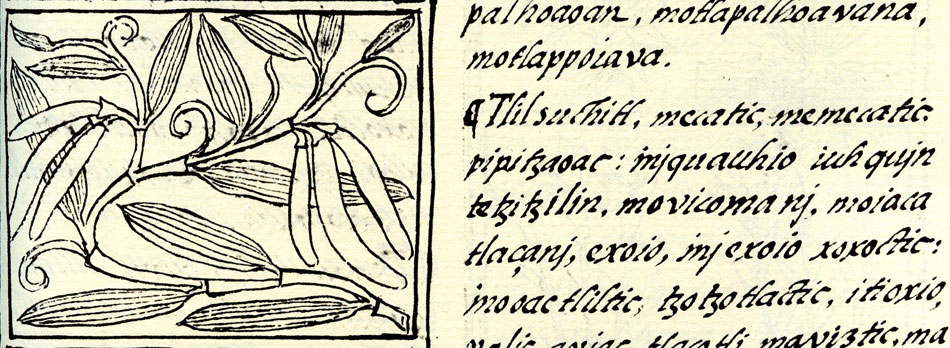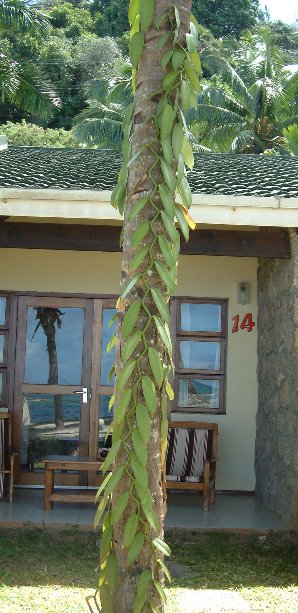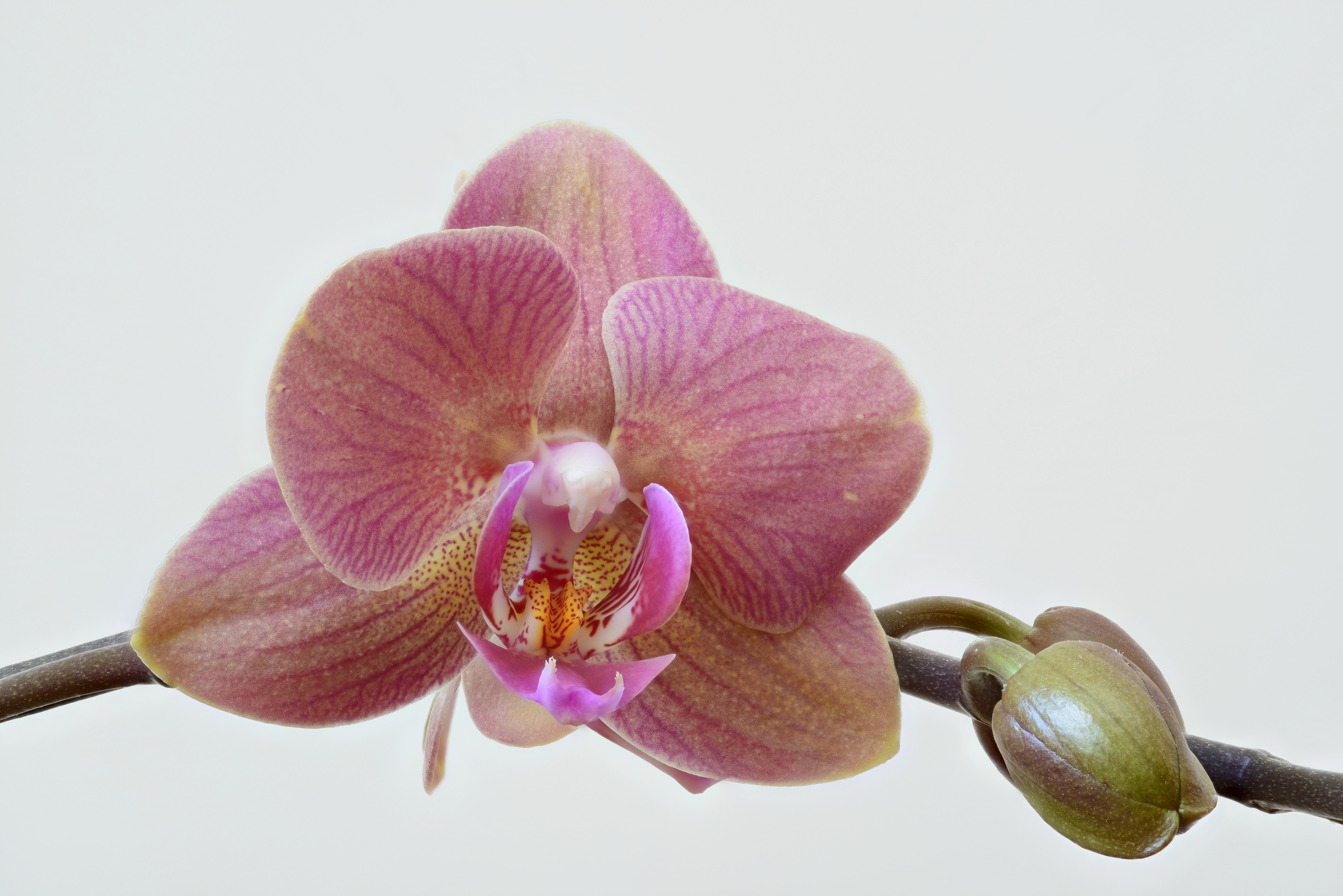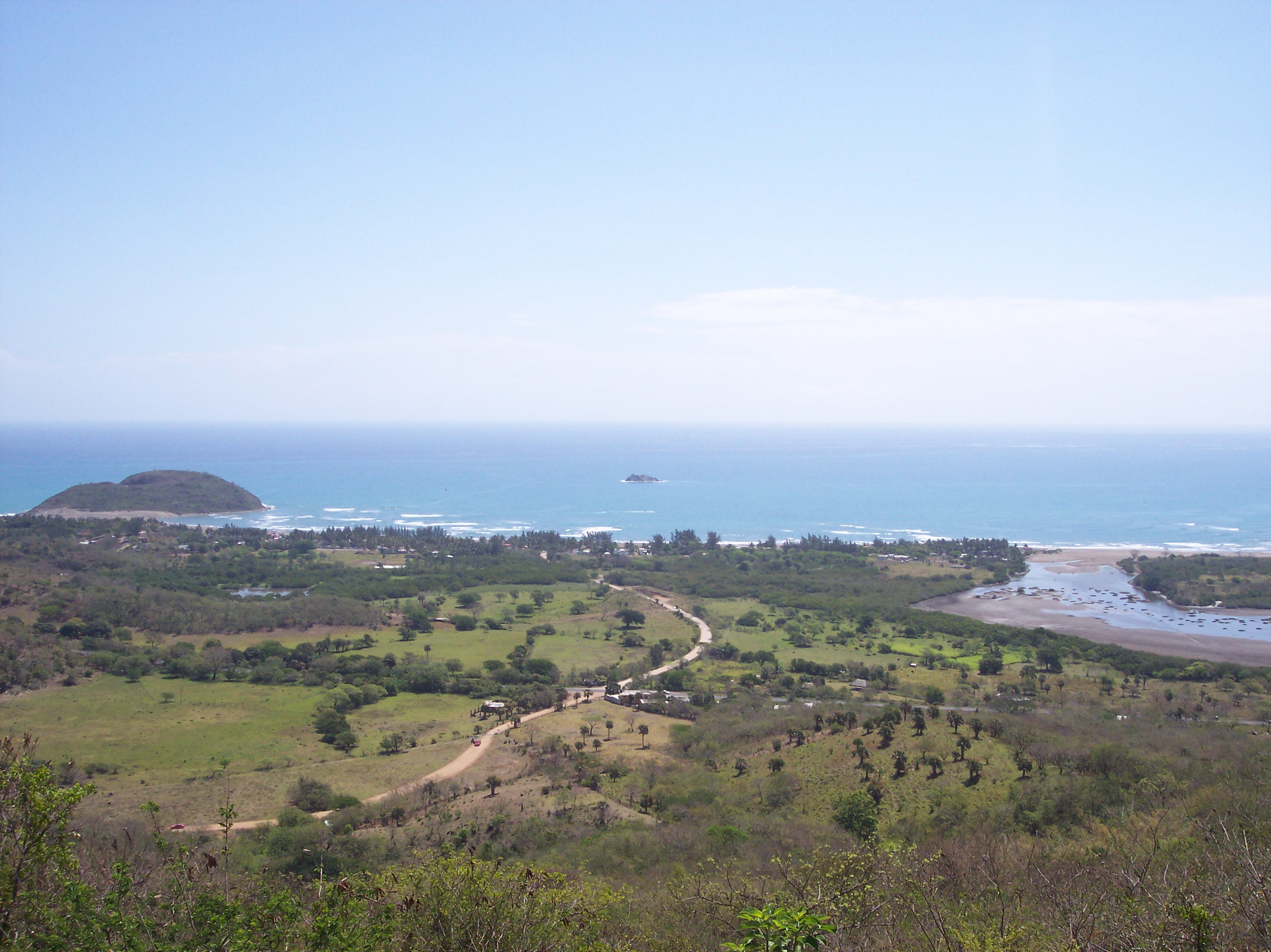|
Vanilla
Vanilla is a spice derived from orchids of the genus ''Vanilla (genus), Vanilla'', primarily obtained from pods of the flat-leaved vanilla (''Vanilla planifolia, V. planifolia''). ''Vanilla'' is not Autogamy, autogamous, so pollination is required to make the plants produce the fruit from which the vanilla spice is obtained. In 1837, Belgian botanist Charles François Antoine Morren discovered this fact and pioneered a method of artificially pollinating the plant. The method proved financially unworkable and was not deployed commercially. In 1841, Edmond Albius, a 12-year-old slave who lived on the French island of Réunion in the Indian Ocean, discovered that the plant could be hand-pollination, hand-pollinated. Hand-pollination allowed global cultivation of the plant. Noted French botanist and plant collector Jean Michel Claude Richard falsely claimed to have discovered the technique three or four years earlier. By the end of the 20th century, Albius was considered the ... [...More Info...] [...Related Items...] OR: [Wikipedia] [Google] [Baidu] |
Vanilla Planifolia (6998639597)
''Vanilla planifolia'' is a species of Vanilla (genus), vanilla orchid native to Mexico, Central America, Colombia, and Brazil. It is one of the primary sources for vanilla flavouring, due to its high vanillin content. Common names include flat-leaved vanilla, and West Indian vanilla (also used for the Pompona vanilla, ''Vanilla pompona, V. pompona''). Often, it is simply referred to as vanilla. It was first scientifically named in 1808. ''Vanilla planifolia'' had a large role in the early rural economy throughout Mexico and became a commonly cultivated crop. With the species' population in decline and its habitats being converted to other purposes, the IUCN has assessed ''Vanilla planifolia'' as Endangered. Description ''Vanilla planifolia'' grows as an evergreen vine, either on the ground or on trees. It will sometimes grow as an epiphyte without rooting in the soil. When rooted in the soil its terrestrial roots are branched and develop fine root hairs associated with mycorrhiz ... [...More Info...] [...Related Items...] OR: [Wikipedia] [Google] [Baidu] |
Vanilla Planifolia
''Vanilla planifolia'' is a species of vanilla orchid native to Mexico, Central America, Colombia, and Brazil. It is one of the primary sources for vanilla flavouring, due to its high vanillin content. Common names include flat-leaved vanilla, and West Indian vanilla (also used for the Pompona vanilla, '' V. pompona''). Often, it is simply referred to as vanilla. It was first scientifically named in 1808. ''Vanilla planifolia'' had a large role in the early rural economy throughout Mexico and became a commonly cultivated crop. With the species' population in decline and its habitats being converted to other purposes, the IUCN has assessed ''Vanilla planifolia'' as Endangered. Description ''Vanilla planifolia'' grows as an evergreen vine, either on the ground or on trees. It will sometimes grow as an epiphyte without rooting in the soil. When rooted in the soil its terrestrial roots are branched and develop fine root hairs associated with mycorrhizal fungus. In the wild it easi ... [...More Info...] [...Related Items...] OR: [Wikipedia] [Google] [Baidu] |
Vanilla (genus)
''Vanilla'', the vanilla orchids, forms a flowering plant genus of about 110 species in the orchid family (Orchidaceae). This evergreen genus occurs worldwide in tropical and subtropical regions, from tropical America to tropical Asia, New Guinea and West Africa. Five species are known from the contiguous United States, all limited to southern Florida. The most widely known member is the flat-leaved vanilla ('' V. planifolia''), native to Mexico and Belize, from which commercial vanilla flavoring is derived. It is the only orchid widely used for industrial purposes in flavoring such products as foods, beverages and cosmetics, and is recognized as the most popular aroma and flavor. The key constituent imparting its flavour is the phenolic aldehyde vanillin. The genus was established in 1754 by Plumier, after J. Miller. The word ''vanilla'', derived from the diminutive of the Spanish word ''vaina'' (''vaina'' itself meaning sheath or pod), simply translates as little pod ... [...More Info...] [...Related Items...] OR: [Wikipedia] [Google] [Baidu] |
Vanilla × Tahitensis
''Vanilla ''×'' tahitensis'' is a Hybrid (biology), hybrid Orchidaceae, orchid in the genus ''Vanilla (genus), Vanilla''. It was Species description, first described by the botanist John William Moore (botanist), John William Moore in 1933 from Raiatea in the Society Islands, where it was found growing on trees, having escaped plant, escaped from cultivation. History ''Vanilla'' × ''tahitensis'' is a polyploid that is a cross between ''Vanilla planifolia'' and ''Vanilla odorata''. This hybridisation may have happened naturally or inadvertently in the period 1350-1500 in tropical America, though it is listed as an artificial hybrid in Plants of the World Online (POWO). It was used by the Aztecs and the flavour proved popular with the Spaniards. Hernán Cortés brought vanilla pods to Europe where they were grown in greenhouses, and cultivation was attempted in various tropical locations. Seeds from Madagascar were taken to Tahiti in 1848 by the French Admiral Ferdinand-Alphonse H ... [...More Info...] [...Related Items...] OR: [Wikipedia] [Google] [Baidu] |
Vanilla Pompona
''Vanilla pompona'' is a species of Vanilla (genus), vanilla orchid. It is native to Mexico and northern South America, and is one of the sources for vanilla flavouring, due to its high vanillin content. According to research by British and Swedish scientists, the smell of vanilla is a favorite among most people in the world. ''Vanilla pompona'' found in the Peruvian Amazon has been tested using HPLC analysis showing a concentration of vanillin content up to 9.88g/100g making it suitable for the food or cosmetic industry. Description Like all members of the genus ''Vanilla'', ''V. pompona'' is a vine. It uses its fleshy roots to support itself as it grows. Its leaves and stems are generally thicker than in ''Vanilla planifolia, V. planifolia'' and ''Vanilla phaeantha, V. phaeantha''. Pollination ''V. pompona'' is one of the few ''Vanilla'' species for which there is definitive identification of the agents responsible for pollination; a study found that males of a medium-sized ... [...More Info...] [...Related Items...] OR: [Wikipedia] [Google] [Baidu] |
Orchid
Orchids are plants that belong to the family Orchidaceae (), a diverse and widespread group of flowering plants with blooms that are often colourful and fragrant. Orchids are cosmopolitan plants that are found in almost every habitat on Earth except glaciers. The world's richest diversity of orchid genera and species is in the tropics. Orchidaceae is one of the two largest families of flowering plants, the other being the Asteraceae. It contains about 28,000 currently accepted species in 702 genera. The Orchidaceae family encompasses about 6–11% of all species of seed plants. The largest genera are '' Bulbophyllum'' (2,000 species), '' Epidendrum'' (1,500 species), '' Dendrobium'' (1,400 species) and '' Pleurothallis'' (1,000 species). It also includes '' Vanilla'' (the genus of the vanilla plant), the type genus '' Orchis'', and many commonly cultivated plants such as '' Phalaenopsis'' and '' Cattleya''. Moreover, since the introduction of tropical species into cu ... [...More Info...] [...Related Items...] OR: [Wikipedia] [Google] [Baidu] |
Edmond Albius
Edmond Albius (c. 1829 – 9 August 1880) was a horticulturalist from Réunion. Born into slavery, Albius became an important figure in the cultivation of vanilla. At the age of 12, he invented a technique for pollinating vanilla orchids quickly and profitably. Albius's technique revolutionized the cultivation of vanilla and made it possible to profitably grow ''Vanilla planifolia'' away from its native habitat (Mexico to Brazil). Early life Albius was born in St. Suzanne, Réunion. His mother, an enslaved woman, died during his birth. The colonist keeping Edmond in slavery was Féréol Bellier Beaumont. Vanilla pollination French colonists brought vanilla beans to Réunion and nearby Mauritius in the 1820s with the hope of starting production there. However, the vines were sterile because no insect would pollinate them. In 1837, Charles Morren, a professor of botany at the University of Liège in Belgium, published a method of hand-pollination, but his technique was slow and ... [...More Info...] [...Related Items...] OR: [Wikipedia] [Google] [Baidu] |
Charles François Antoine Morren
Charles François Antoine Morren (3 March 1807 in Ghent – 17 December 1858 in Liège), was a Belgian botanist and horticulturist, and Director of the ''Jardin botanique de l'Université de Liège''. Morren is credited with introducing the term "phenology" in 1853. His position at the University of Liege was taken up in 1858 by his son Charles Jacques Édouard Morren. Life and work Morren was born in Ghent and went to study in Brussels where he was a student of Abbé Van Brabant. He also attended the lectures of Adolphe Quetelet at the Athénée, as well as those by Dekin on natural history, Laisné on chemistry, Jean Kickx (1775-1831) and Pierre-Léonard Vander Linden. He taught physics at Ghent University between 1831 and 1835. At the same time he studied medicine and graduated in 1835. He became Professor extraordinarius of botany at the University of Liège from 1835 to 1837, and full professor from 1837 to 1854. Pollination of ''Vanilla'' orchids is required to make th ... [...More Info...] [...Related Items...] OR: [Wikipedia] [Google] [Baidu] |
Veracruz
Veracruz, formally Veracruz de Ignacio de la Llave, officially the Free and Sovereign State of Veracruz de Ignacio de la Llave, is one of the 31 states which, along with Mexico City, comprise the 32 Political divisions of Mexico, Federal Entities of Mexico. Located in eastern Mexico, Veracruz is bordered by seven states, which are Tamaulipas, San Luis Potosí, Hidalgo (state), Hidalgo, Puebla, Oaxaca, Chiapas, and Tabasco. Veracruz is divided into Municipalities of Veracruz, 212 municipalities, and its capital city is Xalapa, Xalapa-Enríquez. Veracruz has a significant share of the coastline of the Gulf of Mexico on the east of the state. The state is noted for its mixed ethnic and indigenous populations. Cuisine of Veracruz, Its cuisine reflects the many cultural influences that have come through the state because of the importance of the port of Veracruz (city), Veracruz. In addition to the capital city, the state's largest cities include Veracruz, Coatzacoalcos, Córdoba, V ... [...More Info...] [...Related Items...] OR: [Wikipedia] [Google] [Baidu] |
Totonac
The Totonac are an Indigenous people of Mexico who reside in the states of Veracruz, Puebla, and Hidalgo. They are one of the possible builders of the pre-Columbian city of El Tajín, and further maintained quarters in Teotihuacán (a city which they claim to have built). Until the mid-19th century they were the world's main producers of vanilla. The Totonac people cultivated vanilla in Papantla, but faced with competition when the French island of Réunion entered the market. This group of people also encountered conflicts over land ownership during the course of the 19th and early 20th centuries, as the privatization of communal land in Papantla became more of a concern to local elites. Etymology The term "totonac" refers to the people living in Totonacapan. There is no agreement as to the origin of the term. Some authors have translated the term "totonac" as a Nahuatl word meaning "People of Hot Land". The translation for this word in the Totonac Language, according ... [...More Info...] [...Related Items...] OR: [Wikipedia] [Google] [Baidu] |






